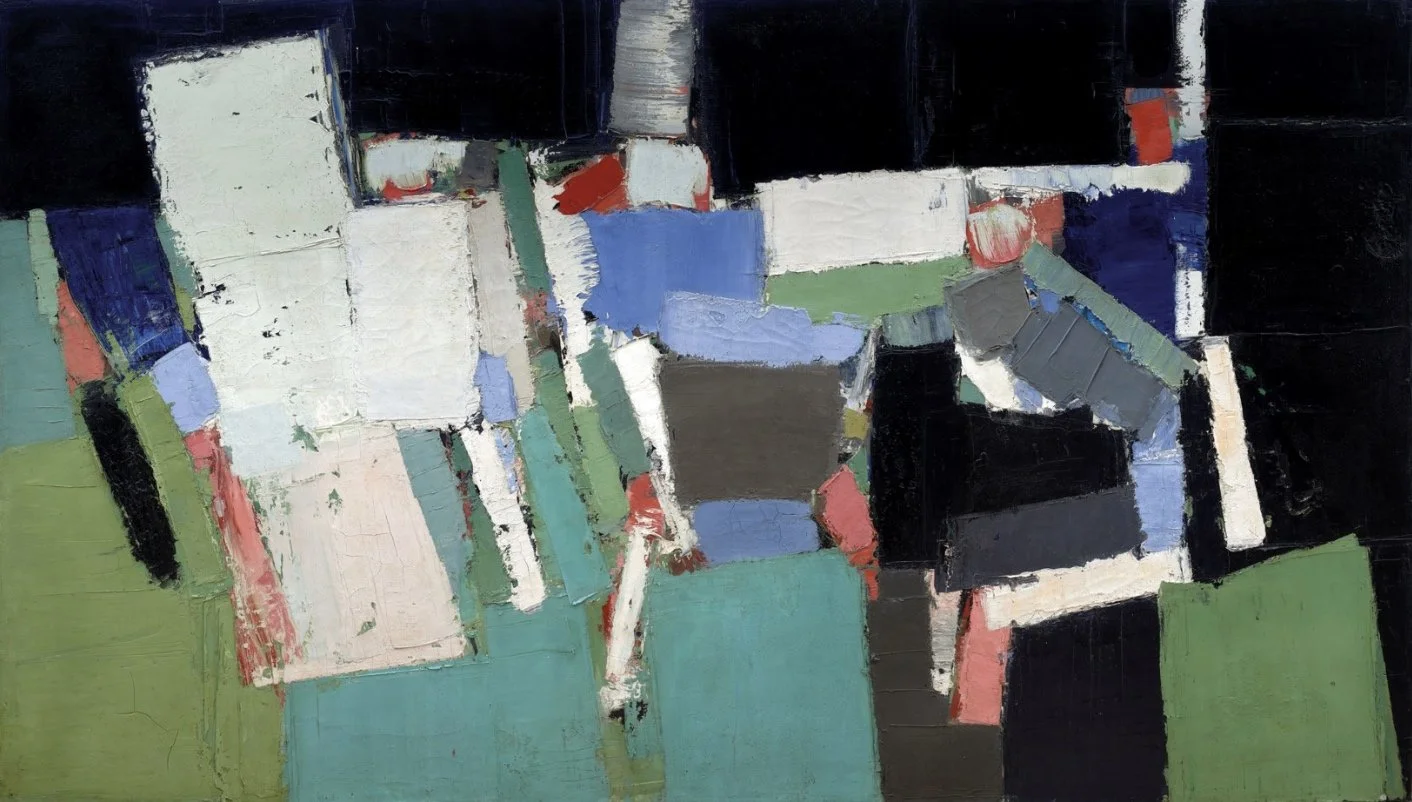Nicolas de Staël: Abstract Truth.
This prolific Russian-born artist struggled to succeed — and wrestled with success.
The handsome, nattily-attired gentleman you see here is artist Nicolas de Staël. Born in 1914 into the Russian aristocracy, de Staël spent his toddlerhood living in St. Petersburg’s majestic Peter and Paul Fortress, where his father, a Tsarist general, served as commandant. Alas, the citadel’s walls weren’t sufficient to hold back the winds of political change sweeping Europe in the early 20th Century — when the Bolshevik Revolution came in 1917, de Staël and his family fled to Estonia, then Poland.
Though they avoided the bloody fate of their friends the Romanovs, within five years, both de Staël’s parents had died. He and his sisters were placed in foster care with a Russian couple living in Belgium. After completing his education, where he excelled in the arts, languages, and athletic pursuits including fencing and tennis, de Staël eked out a meagre existence in his early adulthood, working as a decorator.
Saving his earnings, he was able to travel in Spain and Morocco, soaking up inspiration from the vivid landscapes — and meeting in the latter country the woman who’d become his wife (inconveniently, married to someone else when they first became acquainted), fellow artist Jeannine Guillou.
Broke, the couple moved in with Guillou’s parents in France. Unfortunately during the Second World War there were precious few earning opportunities for painters — of walls, or canvases. The family descended into extreme poverty, and by the cessation of hostilities, de Staël had become the quintessential starving artist. In fact, he so struggled to put food on the table that Guillou died of malnutrition not long after the Nazis’ defeat… just as de Staël’s artistic career was finally picking up.
“I do not set abstract painting as an opposition to figuration. A painting should be both abstract and figurative: abstract to the extent that it is a flat surface, figurative to the extent that it is a representation of space.”
The painter enjoyed significant success and great popularity throughout the late ’40s and early ’50s, creating around 1,000 works during this period in the abstract impasto style that was his signature. The subject of numerous exhibitions in Paris, London and New York, de Staël’s work was acquired by prestigious institutions including the Musée National d’Art Moderne in Paris, and as fast he could work his palette knife, collectors eagerly snapped up his canvases.
Sadly, under pressure to keep pace with ever-increasing demand for his art, suffering from depression, and dejected following an encounter with a disparaging critic, in March 1955, de Staël ended his own life, leaping from the eleventh-storey terrace of his studio in Antibes. (This should serve as a potent reminder, in these days where we’re all too quick to snipe from behind a keyboard, that it’s best to be kind — everyone’s going through their own battle, no matter how outwardly successful they may seem.)
In the years following de Staël’s death, his art has only grown more influential, sought-after, valuable — and fashionable. As part of his recent refurbishment of Chanel’s Place Vendôme flagship, renowned interior designer Peter Marino gave de Staël’s 1950 painting Composition (the largest work the artist ever completed) pride of place in the grand private salon.
“I had originally purchased Composition from Sotheby’s in London more than 20 years ago on behalf of a client, who later sold it,” Marino recalled. “When Chanel mentioned this was the painting they considered buying, I thought it was wild. But the house felt it really represents the same kind of luxurious modernism, forward thinking but at the same time, bearing this sort of ancient eternalism that represented the values of Chanel well. I was thrilled.”
In 2019, a new record was set for highest sale achieved by a de Staël artwork, with a price of €20 million realised at Christie’s Paris for the 2 x 3.5m oil, Parc des Princes (Les grands footballeurs).
The 1952 work was part of a pivotal series of 26 paintings depicting a France-Sweden soccer match, hailed for marking a significant moment in de Staël’s creative evolution, achieving a “synthesis between the abstract and the figurative,” according to Pierre Martin-Vivier, Director of 20th-Century Art at Christie’s Paris.
The painting had been in the possession of de Staël’s family ever since the artist’s demise. With de Staël’s pictures now fetching such substantial sums, one imagines that few of this once starving artist’s descendants are likely to go hungry anytime soon.


